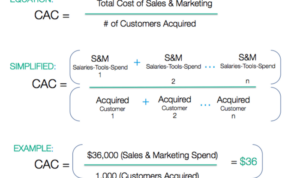Understanding Audience Demographics sets the stage for this enthralling narrative, offering readers a glimpse into a story that is rich in detail with american high school hip style and brimming with originality from the outset.
When it comes to marketing strategies and product development, knowing your audience is half the battle. Dive into the world of audience demographics to uncover the secrets behind successful business campaigns.
Importance of Understanding Audience Demographics

Understanding audience demographics is like having the secret sauce for businesses to spice up their game. It’s the key to unlocking the hearts (and wallets) of the target market. By knowing who your audience is, where they hang out, what they like, and how they behave, businesses can tailor their marketing strategies to hit the bull’s eye every time.
Impact on Marketing Strategies
When businesses have a good grasp of their audience demographics, they can create marketing campaigns that speak directly to their target market. For example, if a company knows that most of its customers are young adults who love social media, they can focus their advertising efforts on platforms like Instagram and TikTok. This targeted approach ensures that the message reaches the right people at the right time, increasing the chances of conversion.
- Personalized messaging: By understanding audience demographics, businesses can craft messages that resonate with their target audience, leading to higher engagement and brand loyalty.
- Effective channel selection: Knowing where your audience spends their time allows businesses to choose the most relevant marketing channels, maximizing reach and impact.
- Product placements: Audience demographics influence product placement decisions, helping businesses position their offerings in a way that appeals to their target market.
Influence on Product Development
Audience demographics play a significant role in product development by guiding businesses on what features, designs, or functionalities to prioritize. For instance, if a company’s research shows that their target audience values sustainability, they may choose to develop eco-friendly products to align with their customers’ values.
- Feature prioritization: Understanding audience demographics helps businesses identify which product features are most important to their target market, allowing them to focus on what matters most to customers.
- Design considerations: Demographic information can impact product design choices, such as colors, packaging, and branding, to appeal to specific audience segments.
- Customization opportunities: By tailoring products to the preferences of different demographic groups, businesses can create personalized offerings that cater to diverse customer needs.
Types of Audience Demographics

Understanding different types of audience demographics is crucial for businesses to tailor their marketing strategies effectively. Let’s explore some key demographic factors and how they impact consumer behavior.
Age
Age is a significant demographic factor that influences consumer preferences and purchasing behavior. For example, younger audiences may be more interested in trendy products, while older demographics may prioritize quality and reliability. Businesses often adjust their advertising and product offerings to appeal to specific age groups.
Gender
Gender plays a role in shaping consumer behavior as well. For instance, marketing messages targeting men and women may differ based on their unique preferences and interests. Businesses may create gender-specific campaigns to resonate with their target audience effectively.
Income
Income level is another crucial demographic factor that impacts consumer spending habits. Individuals with higher incomes may be willing to invest in premium products, while those with lower incomes may seek budget-friendly options. Businesses often adjust their pricing strategies to cater to different income brackets.
Education
Education level can also influence consumer behavior. Highly educated individuals may prioritize products that offer intellectual stimulation or align with their values, while those with lower education levels may focus on practicality and affordability. Businesses may craft messaging that resonates with the educational background of their target audience.
Tools and Methods for Audience Demographics Analysis
Understanding audience demographics is crucial for businesses to tailor their marketing strategies effectively. To achieve this, various tools and methods are utilized to analyze audience demographics, providing valuable insights for decision-making.
Common Tools for Analyzing Audience Demographics
- Social Media Analytics Platforms: Platforms like Facebook Insights, Google Analytics, and Twitter Analytics provide detailed demographic data on audience engagement.
- Customer Relationship Management (CRM) Systems: CRM systems help track customer interactions and behavior, offering demographic information for targeted marketing.
- Survey Tools: Online survey tools like SurveyMonkey or Google Forms enable businesses to gather specific demographic data directly from their audience.
Role of Surveys and Market Research in Gathering Demographic Data
Surveys and market research play a crucial role in collecting demographic data by directly engaging with the audience. By asking targeted questions related to age, gender, location, interests, and more, businesses can gather valuable insights to understand their audience better. This data helps in creating personalized marketing campaigns and improving overall customer experience.
Role of Data Analytics in Understanding Audience Demographics
Data analytics tools like Google Analytics, Tableau, or IBM SPSS help businesses analyze large sets of data to identify trends, patterns, and correlations within audience demographics. By leveraging data analytics, businesses can gain a deeper understanding of their audience’s behavior, preferences, and characteristics, allowing for more targeted and effective marketing strategies.
Impact of Audience Demographics on Content Creation: Understanding Audience Demographics
When it comes to creating content, understanding your audience demographics is crucial. It influences the tone, style, and overall effectiveness of your message. By tailoring your content to specific demographics, you can connect with your audience on a deeper level and increase engagement.
Personalization in Content Creation
Personalization is key when it comes to content creation based on demographics. By customizing your message to resonate with the interests, preferences, and needs of your target audience, you can create a more meaningful connection. This can lead to higher conversion rates, increased brand loyalty, and a stronger brand presence.
- Using language and imagery that resonates with specific age groups, such as slang or popular cultural references.
- Adapting the tone of your content to match the values and beliefs of different demographic segments.
- Creating content formats that align with the preferred channels of communication for various demographics, such as video for younger audiences or long-form articles for older audiences.
Examples of Successful Content Campaigns, Understanding Audience Demographics
Many brands have successfully tailored their content campaigns to specific audience demographics, resulting in increased engagement and brand loyalty. For example, Nike’s “Dream Crazier” campaign targeted women of all ages and backgrounds, celebrating female athletes and empowering women to break barriers in sports. This campaign resonated with its target audience by highlighting stories of perseverance, determination, and empowerment that appealed to women across different demographics.
By understanding your audience demographics and personalizing your content, you can create a powerful connection that drives engagement and loyalty.





